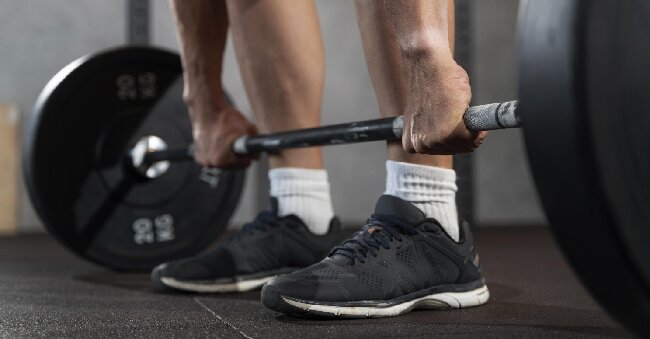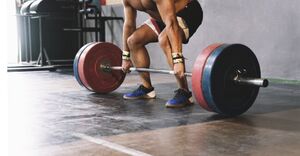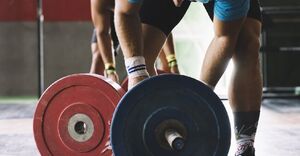
Olympic Barbells: Evolution, Benefits & Top Picks
From the early days of weightlifting to the cutting-edge competitions of today, Olympic barbells have come a long way in terms of design and technology. In this article, we will explore the fascinating journey of Olympic barbells, starting from their classic origins to the sleek modern designs we see in competitions. We will also delve into the role of technology in shaping these essential weightlifting tools and discuss the impact of Olympic barbells on records and competitions. We will look ahead to the future, exploring potential innovations that could revolutionize the sport of weightlifting. Join us on this exciting exploration of the evolution of Olympic barbells!
The Classic Olympic Barbells
The Classic Olympic Barbells have a rich history dating back to the early days of weightlifting. These barbells were crafted with precision and durability to meet the demands of the ancient athletes.
Characterized by their iconic design of a long steel bar with rotating sleeves at the ends to allow weight plates to be easily added or removed, these barbells revolutionized weightlifting equipment. Over time, technological advancements have further refined these classic designs, introducing features such as needle bearings for smoother rotation and specialized coatings for enhanced grip. The evolution of Olympic barbells reflects the marriage of tradition and innovation, showcasing a blend of timeless craftsmanship with modern engineering.
What Were the Early Designs of Olympic Barbells?
The early designs of Olympic barbells were characterized by simplicity and functionality. These classic barbells were often made from basic materials and featured minimalistic yet effective designs.
- Many of the early barbell models were crafted from durable iron, providing a solid foundation for strength training exercises. With simplistic knurling patterns and sleeve bearings for easy plate loading, these barbells were designed to withstand heavy lifting sessions.
- The evolution of equipment design brought about advancements in materials, such as the introduction of high-grade steel and chrome coatings, enhancing both durability and performance. These innovations paved the way for modern barbell designs that cater to a wide range of athletes and disciplines.
How Did the Classic Barbells Evolve Over Time?
The evolution of classic Olympic barbells over time witnessed significant changes in design, materials, and performance enhancements. From the basic structures of early barbells emerged more sophisticated and specialized designs tailored to meet the evolving needs of weightlifters.
Throughout history, barbell construction techniques have evolved from simple iron rods to more versatile models featuring rotating sleeves and improved grip patterns. The industrial revolution played a pivotal role in the mass production of barbells, making them more accessible to a wider audience of fitness enthusiasts. As advancements in metallurgy and engineering techniques flourished, barbells became lighter, more durable, and capable of handling heavier loads, leading to enhanced athletic performance and training capabilities in various disciplines.
The Modern Olympic Barbells
The Modern Olympic Barbells represent the pinnacle of innovation and design in the world of weightlifting equipment. These state-of-the-art barbells are meticulously crafted to enhance athletic performance and support the rigorous demands of weightlifting competitions.
Utilizing cutting-edge materials such as high-strength steel alloys and precision engineering techniques, modern Olympic barbells offer superior durability and performance. The incorporation of advanced features like needle bearings in the sleeves ensures smooth rotation during lifts, reducing friction and enhancing efficiency in weightlifting movements. These barbells often feature specialized knurling patterns that provide athletes with a secure grip, promoting proper technique and minimizing the risk of slippage during intense training sessions. With their versatility and reliability, these innovative barbells have significantly elevated the standard of training equipment in the sport of weightlifting.
What Are the Features of Modern Olympic Barbells?
Modern Olympic barbells boast innovative features such as precision engineering, ergonomic grips, and specialized materials that optimize performance and durability. These advanced designs cater to the diverse needs of weightlifters in the contemporary fitness industry.
The ergonomic grips of these barbells are crafted to provide optimal comfort and control during lifting sessions, reducing the risk of hand fatigue and injuries. The use of high-quality materials like stainless steel or chromed steel ensures longevity and reliability. Cutting-edge technologies, such as needle bearings in the sleeves, allow for smooth and consistent spin, enhancing the overall lifting experience and promoting better technique. These elements work in harmony to maximize the efficiency and effectiveness of weightlifting equipment, making them indispensable tools for athletes of all levels.
How Do Modern Olympic Barbells Compare to Classic Designs?
The comparison between modern Olympic barbells and classic designs reveals a fascinating evolution in weightlifting equipment. While classic barbells focused on simplicity and functionality, modern barbells prioritize advanced technologies, ergonomic design, and enhanced performance capabilities.
Modern barbells have undergone significant advancements in materials, with the use of high-strength steel and innovative coating techniques for improved durability and grip. The incorporation of features like needle bearings and bushings in modern barbells ensures smoother rotation, reducing wrist strain and enhancing overall lifting experience. These developments have allowed athletes to push their limits with greater comfort and safety, unlocking new levels of performance previously unattainable with classic barbell designs.
The Role of Technology in the Evolution of Olympic Barbells
Technology has played a crucial role in the evolution of Olympic barbells, driving advancements in performance enhancements, materials science, and ergonomic design. These technological innovations have revolutionized the field of weightlifting equipment and transformed the way athletes train and compete.
Incorporating cutting-edge materials like high-strength steel and advanced alloys has not only increased the durability and strength-to-weight ratio of Olympic barbells but has also allowed for more precise weight distribution. Athletes can now benefit from barbells that offer better grip, reduced fatigue, and improved performance consistency, enhancing their overall training experience.
Tech-enabled features including smart sensors and data tracking capabilities have added a new dimension to weightlifting, enabling coaches and athletes to analyze technique, track progress, and mitigate injury risks for a safer and more efficient training regime.
What Technological Advancements Have Shaped the Design of Olympic Barbells?
Technological advancements have significantly influenced the design of Olympic barbells, introducing performance-enhancing features such as durable coatings, specialized grip patterns, and precision weight distribution. These innovations have redefined the standards of weightlifting equipment and elevated the training experience for athletes.
The integration of advanced materials like stainless steel and aerospace-grade alloys has further enhanced the durability and longevity of Olympic barbells. Advancements in manufacturing processes, such as CNC machining and robotic welding, have ensured the consistency and precision in the construction of these weightlifting tools. The ergonomic design elements, including knurled handles and rotating sleeves, have optimized the user experience by promoting better grip, reducing strain on the wrists, and facilitating smooth movements during lifts.
How Have These Advancements Improved Performance and Safety?
The advancements in barbell technology have not only boosted athlete performance but also enhanced safety standards in weightlifting. With features like anti-slip coatings, shock-absorbing materials, and precision engineering, modern Olympic barbells provide athletes with the tools to maximize their strength training while minimizing the risk of injuries.
These technological advancements have truly revolutionized the landscape of strength training techniques in Olympic weightlifting. By allowing athletes to customize their training experience through adjustable weights and specialized grip designs, these innovative barbells cater to individual needs while promoting better form and technique. The precision in manufacturing ensures consistent performance, enabling weightlifters to push their limits in a controlled and safe manner. This marriage of performance enhancement and safety features signifies a new era in the sport, empowering athletes to reach new heights while prioritizing their well-being.
The Impact of Olympic Barbells on Weightlifting Records and Competitions
Olympic barbells have left a profound impact on weightlifting records and competitions, reshaping the landscape of athletic performance and strength training. These specialized tools have become essential components in the training regimens of Olympic athletes, enabling them to achieve new heights in sports performance and competition.
With their standardized weight and dimensions, Olympic barbells provide a level playing field for athletes to showcase their strength and technique on an international stage. The evolution of barbell technology, including improvements in grip design and durability, has revolutionized the way weightlifters train and compete. This advancement in equipment has contributed to the breaking of numerous world records as athletes push their limits under the guidance of experienced coaches and sports scientists.
How Have Olympic Barbells Affected Weightlifting Records?
The introduction of Olympic barbells has revolutionized weightlifting records by enabling athletes to push the boundaries of their performance capabilities. With precision-engineered barbells designed for optimal weight distribution and grip comfort, athletes have been able to surpass previous records and achieve new milestones in strength training and athletic achievement.
These specialized tools have not only impacted individual athletes but have also influenced the competitive landscape of weightlifting competitions on a global scale. The evolution of modern barbells has set new benchmarks for strength and technique, challenging athletes to continuously strive for improvement and break existing records. By providing athletes with the means to train more effectively and efficiently, Olympic barbells have become integral to the success and progression of weightlifting as a sport.
What Changes Have Been Made to Olympic Barbells in Response to New Records?
In response to new weightlifting records and evolving performance standards, manufacturers have continually refined Olympic barbells to meet the demands of elite athletes and Olympic competitors. These advancements in equipment design and technology have been instrumental in supporting the rigorous training regimens of Olympic athletes and enhancing their competitive edge.
One notable adaptation includes the implementation of stronger and more durable materials, such as high-grade steel alloys, to enhance the barbells’ longevity and overall performance. Refinements in the knurling patterns on the bars have improved grip and control for athletes during lifts, reducing the risk of slippage. Advancements in sleeve technology, like precision bearings and bushings, have optimized the rotation of the barbell, allowing for smoother and more efficient lifts. These enhancements reflect a commitment to innovation and excellence in the realm of weightlifting equipment.
The Future of Olympic Barbells: Potential Innovations and Changes
The future of Olympic barbells holds exciting possibilities for innovations and changes that could revolutionize the world of weightlifting and athletic training. Anticipated advancements in equipment design, training tools, and performance gear promise to elevate the standards of Olympic preparation and enhance the capabilities of athletes in the pursuit of excellence.
From advancements in materials to the integration of smart technology, the evolution of Olympic barbells is set to introduce a new era of precision and efficiency in training.
Athletes may soon benefit from barbells equipped with sensors that provide real-time feedback on technique and performance metrics.
Ergonomic designs and customizable features could optimize comfort and functionality during lifting sessions.
These developments signify a shift towards more personalized and data-driven approaches to weightlifting, ultimately shaping a future where athletes can fine-tune their skills with unparalleled precision.
What New Technologies or Features Could Be Incorporated into Olympic Barbells?
Future Olympic barbells could integrate cutting-edge technologies such as real-time performance monitoring, adaptive resistance systems, and customizable grip configurations to optimize athlete training and enhance competition readiness. These innovative features aim to provide athletes with tailored training experiences and personalized performance enhancements.
By incorporating advanced sensors and AI algorithms, these futuristic barbells could analyze an athlete’s technique in intricate detail, providing instant feedback on form and efficiency. The adaptive resistance systems could adjust the weight load in real time, challenging athletes at their peak performance levels. The customizable grip configurations would allow athletes to fine-tune their equipment to match their preferences and physical attributes, promoting proper alignment and reducing the risk of injury.
These developments have the potential to revolutionize weightlifting techniques, catapulting athletic performance to new heights and setting unprecedented standards for training excellence.
How Might These Changes Impact the Sport of Weightlifting?
The anticipated changes in Olympic barbells and weightlifting equipment could profoundly impact the sport of weightlifting by redefining training methodologies, enhancing athlete performance, and revolutionizing competitive standards. These developments have the potential to shape the future of weightlifting competitions, strength exercises, and fitness accessories, reflecting the continuous evolution of the sport.
With advancements in barbell design and materials, weightlifters may experience improved ergonomics, durability, and performance benefits during their training sessions. Innovations in weightlifting gear, such as specialized grips and collars, could further optimize technique and prevent injuries. These enhancements could not only elevate athletes’ capabilities but also introduce new standards in weightlifting competitions, driving athletes to push their boundaries and achieve greater levels of strength and power.




No Comments